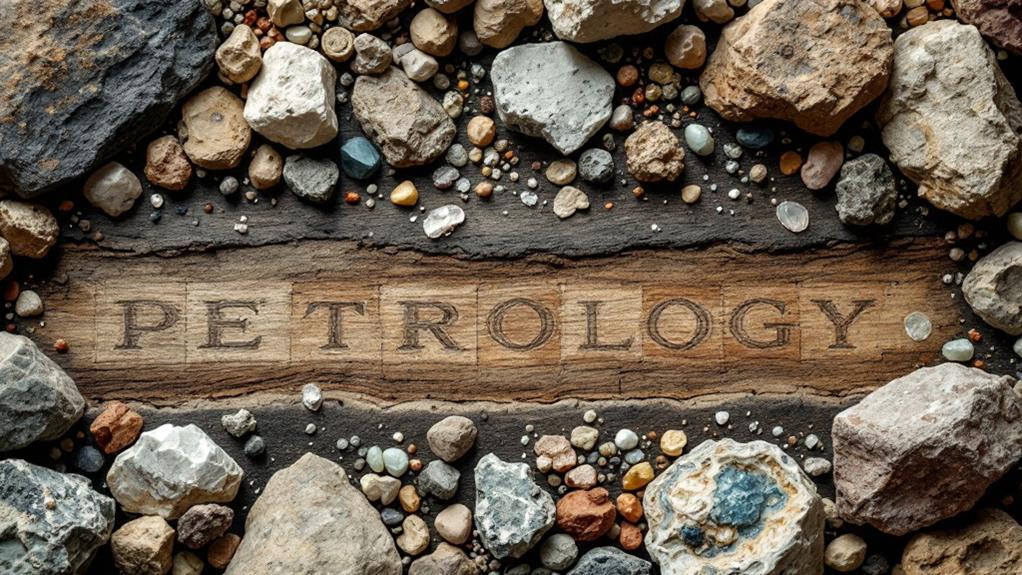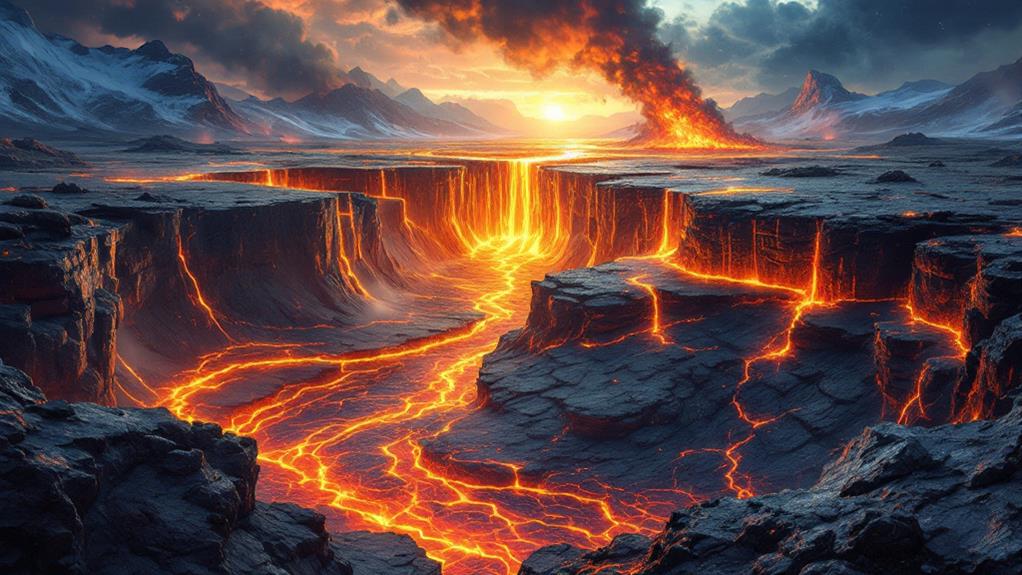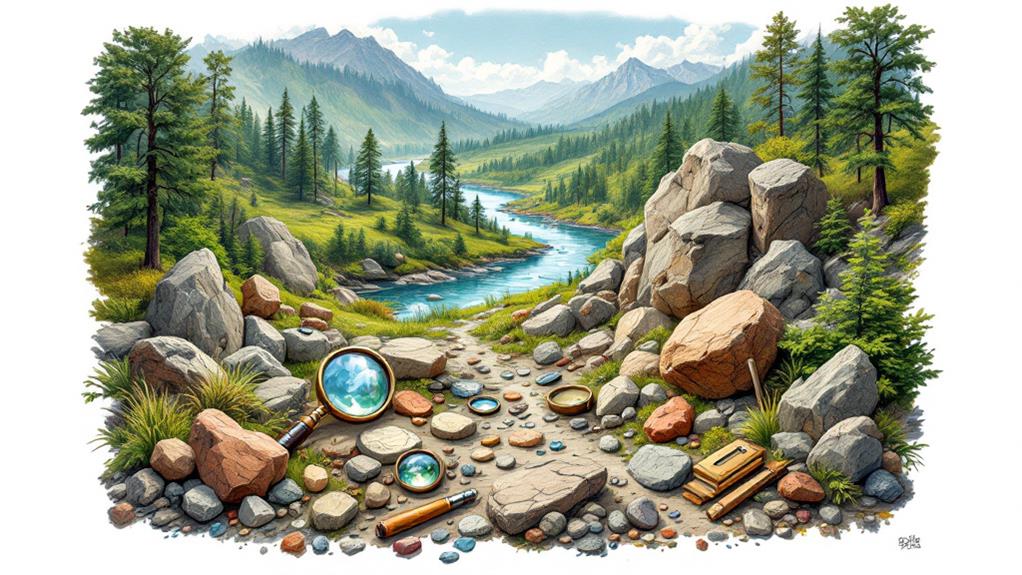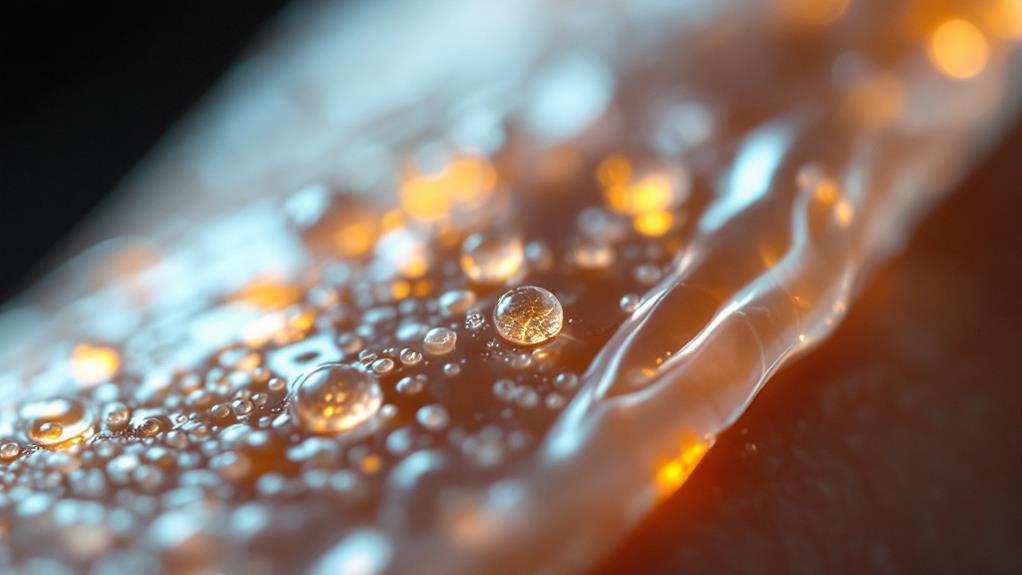The History of Petrology: The Science of Rocks and Their Origins

You're exploring a rich history when you look into petrology, the science of rocks and their origins. Early civilizations viewed rocks as sacred, often using them in daily life and mythological stories. Gradually, curiosity about rock formations led to the initial classifications based on touch and appearance. The Renaissance sparked scientific inquiry, blending art and observation. The 19th century saw advances in classifying earth materials, while plate tectonics explained shifting continents. Today, modern techniques allow precise rock analysis, with petrology playing an essential role in understanding Earth's processes and environmental challenges. Uncover how it all fits together next.
Ancient Observations of Rocks
In ancient times, people closely observed rocks, driven by curiosity and necessity. You'd find that ancient civilizations regarded rocks not just as mere objects, but as significant elements in their daily lives. They attributed rock symbolism to their cultural heritage, often seeing stones as sacred or magical. For instance, the use of geological artifacts was widespread, with primitive tools crafted from stones like flint and obsidian, which were crucial for survival.
As you explore further, you'll notice that mythological explanations often surrounded the mysterious nature of rocks. Many cultures believed that certain stones held powers or were gifts from the gods. This belief highlighted the mineral importance that stones held in society. Ancient people didn't just use rocks practically; they also interpreted the landscape around them, understanding their environment better through the stones they encountered.
Rocks were more than what met the eye; they were intertwined with the stories and traditions of those early societies. By studying these ancient observations, you can appreciate how rocks shaped both the physical world and the cultural identities of early civilizations, forming a foundation for future geological exploration.
Early Geological Theories
Many early geological theories emerged as people sought to explain the Earth's composition and dynamic processes. You'd find that ancient civilizations were already attempting to understand rocks through rock classification. They categorized stones based on observable features like texture and hardness, laying the groundwork for modern geology. These early thinkers also speculated about sedimentary processes, observing how layers of rock seemed to form from compacted material over time.
As you explore the history, you'll see how they grappled with igneous formations, considering how volcanic activity might create new rock. The heat and pressure leading to metamorphic transformations puzzled early geologists, but they began to see patterns in how one rock type could transform into another. This understanding was vital for explaining the dynamic Earth.
Geological mapping, though rudimentary, was a fundamental practice even then. Ancient scholars would attempt to chart land formations, using fossil records to trace the history of life and the shifting of terrains. They were keen observers of mineral composition, linking it to the characteristics and origins of rocks. These early theories, though not always accurate, laid the foundation for future revelations in petrology.
The Birth of Mineralogy

The study of minerals, known as mineralogy, began to take shape as scientists started focusing on the individual building blocks of rocks. You can imagine the excitement of early researchers who uncovered that rocks weren't just uniform masses but were composed of distinct minerals, each with unique properties. This revelation sparked a new period of scientific exploration, where mineral classification became a fundamental pursuit. Scientists started to categorize minerals based on their chemical composition and physical properties, providing a systematic way to understand the Earth's crust.
One of the most thrilling aspects of mineralogy is the study of crystal structures. Imagine the awe of realizing that the tiny particles making up minerals are arranged in precise, repeating patterns. These structures not only define the mineral's identity but also its beauty and utility. As you investigate deeper into this field, you're bound to feel a connection to those pioneering scientists who laid the groundwork for this fascinating discipline.
Here's why you might feel inspired by the birth of mineralogy:
- Exploration: Revealing the unseen world within rocks.
- Order: Creating systems from chaos through classification.
- Beauty: Appreciating the intricate designs of crystal structures.
The Role of the Renaissance
Renaissance thinkers ignited a transformation in the understanding of rocks and minerals, propelling petrology into the spotlight. During this time, your curiosity about the natural world would have been met with a revival of learning and investigation. The Renaissance wasn't just about art and literature; it was a period when scientific curiosity blossomed. People began to question traditional beliefs and sought out empirical evidence to understand the Earth's mysteries.
As you investigate this age, you'll notice that artists and scientists often worked hand in hand. The artistic influence during the Renaissance was profound, with detailed observations of nature becoming integral to artistic expression. This passion for accuracy in portraying the natural world helped spur interest in the composition and origin of rocks and minerals. Leonardo da Vinci, for instance, combined his artistic skills with scientific inquiry, studying the layers of the Earth and theorizing about geological processes.
The Renaissance set the stage for future advancements in petrology by fostering an environment where observation and inquiry were valued. This period laid the groundwork for a deeper understanding of geological phenomena, encouraging you to examine the intricate beauty and complexity of rocks with both scientific and artistic lenses.
Advances in the 19th Century

Building on the foundation laid by earlier periods, the 19th century saw rapid advancements in petrology driven by industrialization and scientific innovation. You'd find yourself in a time where rock classification became more systematic, thanks to improved understanding of mineral properties. As you explore the sedimentary processes, you'd notice the period's fascination with how rocks formed over time, leading to breakthroughs in identifying igneous formations and metamorphic transformations.
Field studies became crucial, with geologists venturing into previously unexplored territories, armed with new geological mapping techniques. You'd be amazed at how these maps revealed Earth's complex structure, offering insights into the varied rock types scattered across different regions. Laboratory techniques advanced as well, allowing scientists to analyze rock samples with unprecedented precision.
Consider these emotional milestones that transformed petrology in the 19th century:
- Awe: The realization of Earth's dynamic processes through rock classification and mineral properties.
- Inspiration: The courage of field studies revealing nature's hidden secrets.
- Excitement: The thrill of new laboratory techniques pushing the boundaries of what we knew.
These advancements laid the groundwork for future revelations, forever changing our understanding of Earth's rocky wonders.
The Development of Petrography
As the 19th century's advancements in petrology set the stage, an exciting chapter in the science of rocks unfolded with the development of petrography. You'd find yourself plunging into a world where field techniques became your compass for understanding rock classification. By honing your skills in mineral identification, you could decipher the complex stories told by rocks. Sample preparation turned into a crucial step, allowing you to examine thin sections of rocks under optical microscopy.
Petrography empowered you to distinguish the intricate details of crystal systems, giving insight into how minerals formed and interacted. With geological mapping, you traced the distribution of different rock types, further understanding the Earth's crust. You'd investigate sedimentary processes, decoding how layers of sediments compressed over time, and unravel the mysteries of metamorphic environments, where heat and pressure transformed rocks into new forms.
Igneous formations also captured your attention, revealing how molten materials cooled and solidified into distinct rock types. As you engaged yourself in petrography, you realized it was more than just studying rocks—it was about piecing together Earth's dynamic history, one mineral at a time.
The Plate Tectonics Revolution

The ground beneath your feet isn't static—it's a jigsaw puzzle of moving plates, each a colossal slab of Earth's lithosphere. This concept, known as the plate tectonics revolution, transformed our understanding of geological processes. Envision this: massive plates drifting across the planet, driven by mantle convection. These movements explain the phenomenon of continental drift and result in dynamic interactions at tectonic boundaries.
When plates collide, they create subduction zones and oceanic trenches, altering the earth's crust. This collision leads to rock deformation and triggers seismic activity, shaking the very ground you stand on. With advancements in geological mapping, scientists revealed the hidden dance of these plates. They found that:
- Mountains rise and fall - Tectonic forces can thrust land upward into majestic peaks, only to later erode them away.
- Seas open and close - Ocean basins can form or disappear, reshaping the planet's surface.
- Life is impacted - Ecosystems adapt or perish in response to shifting lands and climates.
Understanding plate interactions offers insights into Earth's past and future, making the study of petrology a fundamental key to discovering these geological mysteries.
Modern Analytical Techniques
Shifting from tectonic movements to the finer details of rock analysis, modern analytical techniques reveal secrets hidden within Earth's solid canvas. You're now equipped with tools like geochemical analysis to uncover the elemental composition of rocks, providing insights into their formation. Isotopic studies let you trace the timeline and origins of rock samples, offering a chronological glimpse into Earth's past.
For mineral identification, X-ray diffraction is your go-to technique. It helps determine the crystalline structure of minerals within rocks. Electron microscopy allows you to visualize rock textures at a microscopic level, providing unparalleled detail. Remote sensing, on the other hand, gives you a bird's-eye view of large geological formations, enabling the mapping and classification of diverse rock types.
Thermodynamic modeling comes into play when you need to simulate the conditions under which rocks form and transform. Experimental petrology, meanwhile, lets you recreate those conditions in a controlled environment, offering tangible insights. With data visualization, you can translate complex results into understandable and actionable insights, making rock classification more intuitive. As you explore deeper into these techniques, you gain a more thorough understanding of Earth's dynamic systems.
Petrology in Environmental Studies

Petrology plays an essential role in environmental studies by helping you understand the interactions between Earth's solid materials and environmental processes. You can see its significance in several areas. Initially, rock weathering and sediment transport are significant in shaping landscapes and influencing soil formation. Understanding these processes helps you develop effective conservation strategies.
Next, petrology aids in pollution assessment and environmental geology by identifying potential sources of contaminants in mineral resources. This knowledge is critical for mitigating pollution and protecting ecosystems. You can use this information to make informed decisions about land reclamation and sustainable development.
Finally, geological mapping provides insights into the past and future of our planet, helping you better assess the impacts of climate change. By analyzing rock formations and their compositions, you can predict changes in Earth's systems and develop adaptive strategies.
Consider these three emotional impacts of petrology on environmental studies:
- Hope: Petrology offers solutions for pollution control and resource management.
- Responsibility: It reminds you of your duty to protect and conserve natural landscapes.
- Urgency: Understanding climate change's effects through petrology demands immediate action.
Embrace the power of petrology to foster a sustainable future.
Future Directions in Petrology
Looking ahead, future directions in petrology promise to revolutionize how we interact with Earth's resources. By integrating sustainable practices, you'll see a shift towards more responsible use of natural materials. One major focus will be developing techniques that minimize environmental impact while maximizing resource efficiency. Petrologists will investigate groundbreaking ways to reduce waste and improve recycling processes, ensuring that rock-based materials are used wisely.
Geochemical analysis will play an essential role in these advancements. You can expect cutting-edge technologies to provide detailed insights into the composition and behavior of rocks. This data will help identify the most sustainable ways to extract and use geological resources. Using advanced sensors and analytical tools, you'll gain a deeper understanding of mineral deposits and their potential impact on ecosystems.
Incorporating these technologies, you'll also see a push towards more predictive modeling. Petrologists will use data-driven approaches to forecast changes in the Earth's crust, allowing for proactive management of resources. This will not only aid in sustainable development but also help mitigate the effects of natural disasters. Ultimately, the future of petrology will empower you to make informed decisions that balance resource use with environmental stewardship.



